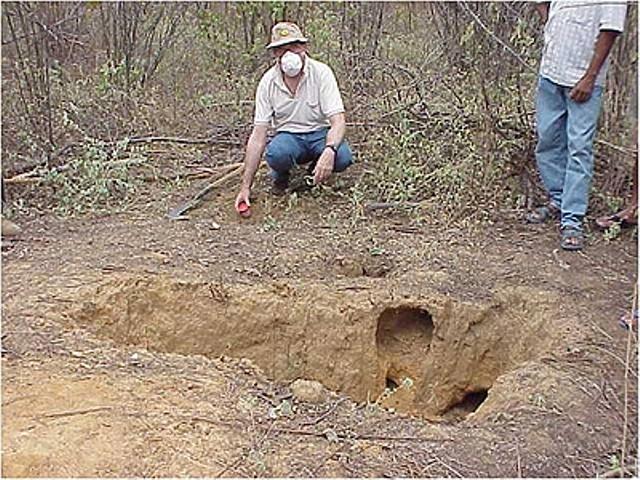
Coccidioidomycosis: physicians and other health care professionals should be alert to this emerging disease
In Brazil, armadillo hunting is a major risk for infection
11/07/2017
Currently the disease is considered endemic in some Northeastern states: Piauí, Ceará, Maranhão and Bahia
A few weeks ago, three people of the same family from Serra Talhada, Pajeú hinterlands (PE), were diagnosed as infected with coccidioidomycosis, a respiratory disease caused by fungus Coccidioides posadasii (C. immitis). This is the first time the disease is reported in the state. The disease has been diagnosed mainly in Piauí and Ceará, with few cases in Maranhão and rare cases in Bahia and now, in Pernambuco. According to the infectious diseases expert at the Teresina Municipal Health Foundation (FMS), Kelsen Eulálio, cases in Brazil reside or come from the Northeast, because the diseases causing fungus survives or multiplies very well in desert or semi-arid regions. Still according to him, the first diagnosis in the Pernambuco hinterlands was expected for a long time, since the climate and environmental conditions in the region were similar to those found in Piauí and Ceará. The cases diagnosed in Piauí had a lethal rate of approximately 8%.
The main trouble diagnosing the infection is not considering it, since coccidioidomycosis can easily be mistaken for other diseases. Many cases must be wrongly diagnosed as unspecific pneumonia (most acute cases) or tuberculosis (cases with milder symptoms) and others certainly sub diagnosed. The greater number of diagnosis in Piauí owes to a long lasting partnership between Fiocruz-RJ and the Federal University of Piauí (UFPI) and services linked to the States Health Secretary, training physicians and laboratory personnel for clinical identification of the disease and laboratory identification of the fungus, said the expert while remembering that coccidioidomycosis is not an obligatory notification disease, as happens to other systemic mycosis.
Dr. Bodo Wanke, coordinator at the National Systemic Mycosis Laboratory in the National Infectology Institute (INI/FIOCRUZ) adds that the disease is little known by physicians and biochemists in Brazil and in the Northeast. It is certainly worth alerting to this regional problem, clarifying to these and other health professionals about the issue, especially when it involves hunting and taking armadillos out of their dens, act that spreads large amounts of infective spores of the fungus which are inhaled by the victim hosts involved in this activity, he says. In Brazil, in over 90% of the cases, the disease has been diagnosed among people who hunt armadillos (Dasypus sp) and were exposed to the animal habitats dust. Dogs involved in armadillo hunts are often infected as well.
Dr. Kelsen Eulálio agrees and adds that our health system is not prepared to diagnose and treat the disease. Systemic mycosis, generally and especially coccidioidomycosis are very little valued in medical school and other health areas academic curricula. There is none or very scarce training for basic attention physicians or hospital network professionals for mycosis clinical suspicion. Biochemists and other higher education technicians are not trained for laboratory diagnosis or even are unaware of the existence of the disease in Brazil, he regrets. To the expert, efforts should be made towards making the disease easier to be identified by physicians and laboratory personnel, especially those working in the Northeast or handling patients from this region. Including systemic mycosis in the obligatory-report diseases list would ease the appreciation and decrease under-reporting of the disease in Brazil.
In the USA, the disease has been more frequently diagnosed among farmers and other individuals who work with soil, isolated cases and small outbreaks have been related to exposure to rodent dens or archaeological excavations. In Brazil, until 2016, cases of the disease were reported among patients proceeding from four northeastern states, mainly Piauí (185), Ceará (21), Maranhão (8) and Bahia (2). In 2017, besides 12 new cases in Piauí, the three first cases in Pernambuco were reported. In 1994, Dr. Bodo Wanke described the first pulmonary coccidioidomycosis epidemic outbreak in the Country, in Oeiras (PI), where three patients developed fever and respiratory symptoms after engaging in an armadillo hunt.
The disease is exclusively found in the Americas, in arid and semi-arid regions, characterized by low rainfall and humidity, from the USA to Argentina. Southeast USA and the adjacent North Mexico are the main areas for mycosis distribution. Brazils Northeast was the last endemic region to be known. The two first cases of the disease in Brazil were reported in the 1970s, in São Paulo and Brasilia, among patients proceeding from Bahia and Piauí. In the early 1990s, after rare reports of the disease, it became more frequently identified, whether as isolated cases, or small outbreaks, or micro epidemics, involving from two to eight people. Approximately 65% of the infected individuals remain asymptomatic.…










